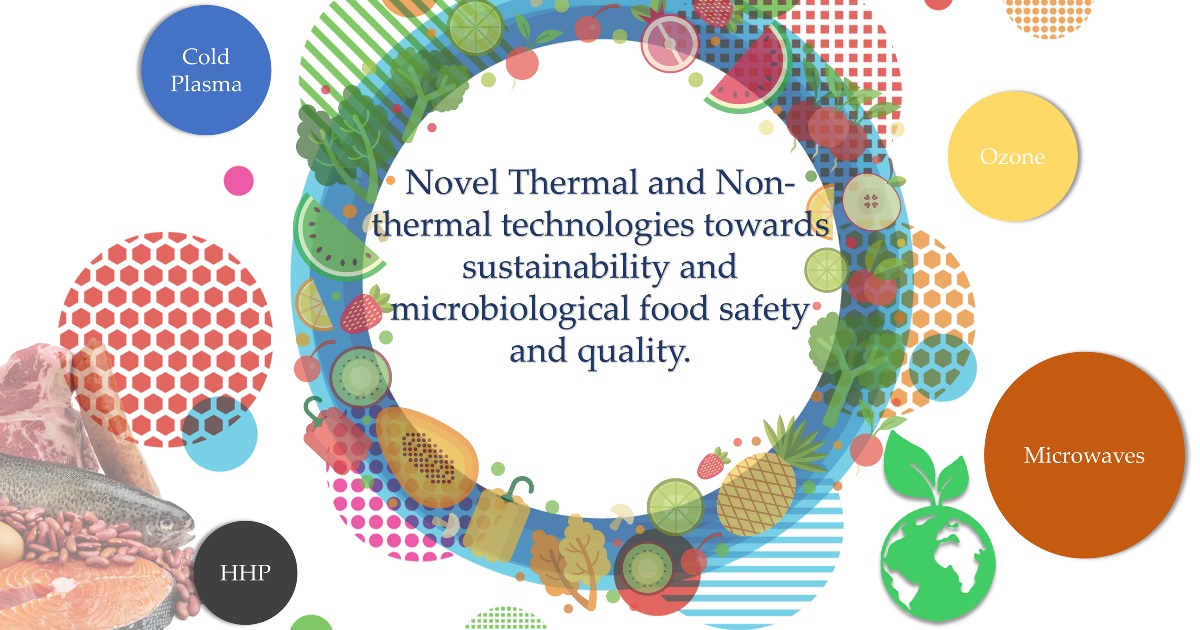Novel Thermal and Non-thermal Technologies towards Sustainability and Microbiological Food Safety and Quality
A special issue of Applied Sciences (ISSN 2076-3417). This special issue belongs to the section "Food Science and Technology".
Deadline for manuscript submissions: 10 May 2024 | Viewed by 1430

Special Issue Editors
Interests: cold plasma; 3D printing; microfluidics; food processing; food microbiology; food safety
Interests: green extraction; isolation and characterization of plant bioactive compounds; encapsulation of bioactive compounds; valorization of agricultural byproducts and wastes; determination of bioaccessibility/bioavailability; assessment of antioxidant activity
Special Issues, Collections and Topics in MDPI journals
Special Issue Information
Dear Colleagues,
With the globalisation of the food trade and the emergence of new consumer habits, food production, processing, and distribution have undergone significant changes. These changes have continuously challenged the global food systems. However, every effort is being made to ensure that the food produced is healthy and safe, which is crucial to guarantee public health and well-being.
Thermal methods are generally performed in the food industry to prolong the product’s shelf life and inactivate spoilage and pathogenic microorganisms. Novel thermal technologies, such as ohmic heating and dielectric heating (e.g., microwave heating and radio frequency heating), have been developed to improve the effectiveness of heat processing whilst warranting food safety and eliminating undesirable impacts on the organoleptic and nutritional properties of foods.
The needs and preferences of consumers keep evolving, and the food industry must keep pace with the changes to grow and succeed. Consumers now demand products that are minimally processed and safe, with added value and long shelf lives, while also being more sustainable. This has led to the development of several green and non-thermal technologies that can help reduce energy consumption in the production, processing, and packaging of food. High-hydrostatic-pressure (HHP) processing, ultrasound (US), cold plasma (CP), pulsed electric fields (PEF), and electrolysed water (EW) are some methods that show the potential to be applied by the food industry. In addition, microfluidic technology and green extraction techniques are interdisciplinary with a diversity of applications, including in food processing.
This Special Issue focuses on the impact of both thermal and non-thermal technologies on the safety, quality and sustainability of food products.
Dr. Sotirios Oikonomou
Dr. Anastasia Kyriakoudi
Guest Editors
Manuscript Submission Information
Manuscripts should be submitted online at www.mdpi.com by registering and logging in to this website. Once you are registered, click here to go to the submission form. Manuscripts can be submitted until the deadline. All submissions that pass pre-check are peer-reviewed. Accepted papers will be published continuously in the journal (as soon as accepted) and will be listed together on the special issue website. Research articles, review articles as well as short communications are invited. For planned papers, a title and short abstract (about 100 words) can be sent to the Editorial Office for announcement on this website.
Submitted manuscripts should not have been published previously, nor be under consideration for publication elsewhere (except conference proceedings papers). All manuscripts are thoroughly refereed through a single-blind peer-review process. A guide for authors and other relevant information for submission of manuscripts is available on the Instructions for Authors page. Applied Sciences is an international peer-reviewed open access semimonthly journal published by MDPI.
Please visit the Instructions for Authors page before submitting a manuscript. The Article Processing Charge (APC) for publication in this open access journal is 2400 CHF (Swiss Francs). Submitted papers should be well formatted and use good English. Authors may use MDPI's English editing service prior to publication or during author revisions.
Keywords
- thermal technologies
- non-thermal technologies
- high hydrostatic pressure
- cold plasma
- food microbiology
- food safety
- food quality
- shelf life
- sustainability






